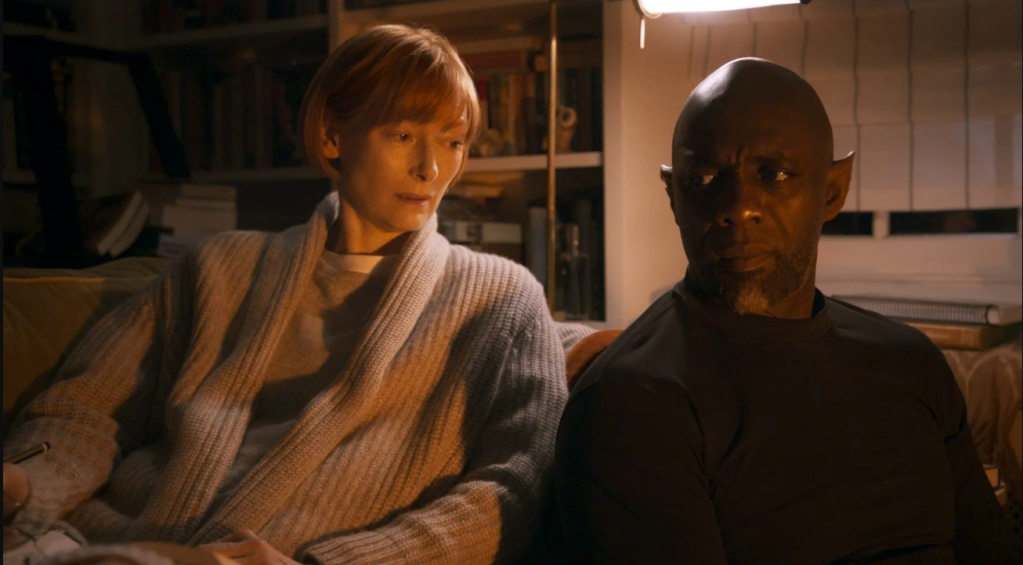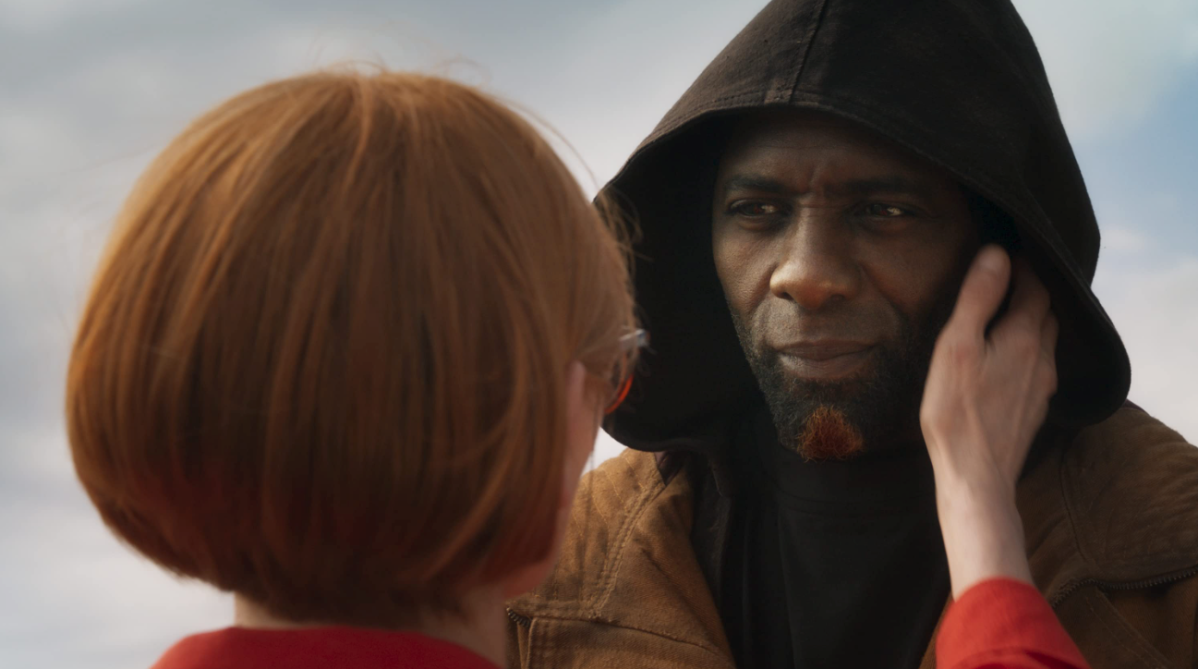In Three Thousand Years of Longing, director George Miller (Mad Max: Fury Road, Happy Feet), delivers a fairy tale about the wondrous nature of reality and the mundane in fairy tales.
The always-terrific Tilda Swinton plays Alithea, a narratologist travelling to Istanbul for a conference, who comes into possession of a mysterious glass bottle and the Djinn trapped inside, played by the always-enchanting Idris Elba. The Djinn has spent most of the last 3,000 years trapped in various bottles and wants nothing more than for Alithea to make three wishes so that he can ascend to the place where Djinn go to when their duty is complete.
The problem is, while everyone else he served wished too hastily or made wishes that backfired, Alithea doesn’t want to make a wish at all. In her work she has read every story about Djinn – and every story about stories about Djinn – and is convinced she’s found herself in a cautionary tale.
Even if the Djinn can convince her that her wishes won’t have ironic twists to them, Alithea is too fulfilled in her career and satisfied in her independence to know what to wish for.
Read: Bullet Train: Brad Pitt – that’s why you’re here, right?
Swinton’s and Elba’s performances ground an otherwise epic and fantastical story. Many stories about wish-granting entities can be too focused on the wishes and not the characters making and granting them. ‘Be careful what you wish for’ is the message of so many short stories (not to mention so many episodes of The Twilight Zone) that it’s become a common idiom.
From The Monkey’s Paw, a 1902 short story about an enchanted object that finds the worst possible way to grant its owner’s wishes, to the Halloween special of The Simpsons that tells its own Monkey’s Paw story, wish-granting is a structure that builds lessons around the act of wishing, sometimes at the expense of building character.

The performances in Three Thousand Years, on the other hand, let characters who could be nothing more than symbols feel instead like real people. The contradictions in Alithea’s life – she is a no-nonsense person whose career deals in whimsy, she gets lost in fictional worlds but has trouble understanding real people – don’t seem like contradictions at all in Swinton’s hands, or rather, they make perfect sense as facets of a real person.
The Djinn, similarly, is not just a figure for a story to hinge on, but he is given real character in a way he might not have in another story. He is an infinitely powerful being, but his power can only be used by others. He is ancient and all-knowing, but makes the same mistakes over and over. He is so focused on the desires of others that he forgets to consider his own.
Read: Of An Age film is a tender and romantic Melburnian treat
Mad Max: Fury Road proved that George Miller could tell a story through action, the packed screen and fast-paced action lending an operatic quality to the film. In Three Thousand Years, the pace isn’t as frantic, but Miller’s gift for visual storytelling comes through just as clearly whether meaning is found in a musical performance or dust motes in the air.
Much of the film is told in flashback with voice-over narration, which can be a difficult thing to get right. Saying too much in narration can seem condescending, but letting images tell the whole story could leave an audience lost. Miller has nailed the art of balancing dialogue with visuals. An otherwise dry and clinical retelling of a relationship is rendered heartbreaking when paired with the blank pages of a photo album.
Read: The Reef: Stalked is ‘certainly a different take on the genre’
Expertly constructed and acted as it is, there are certainly aspects that audiences may not gel with. The film is laid out like a fairy tale, and like many fairy tales the narrative takes the circuitous route to the ending. The first two acts are so exciting that the shift into the slower and more contemplative third act is a bit jarring.
It can also be hard to ignore how race affects the story. The flashbacks show an epic tale of Middle Eastern history, which is not a history that is often shown in historical fantasy epics. But it is worth noting that in the present-day portion of the tale, the Djinn is a person of colour who dedicates his life to serving a white woman, which has uncomfortable connotations no matter how heartwarming the culmination of their story is.
And heartwarming it is. Call me sentimental, but I am always a sucker for stories about the enduring power of love, and this is no exception. I was enchanted by this tale of a straight-laced career academic whose relationship with an ancient and powerful being makes them both grow and change for the better. Far from the ‘be careful what you wish for’ story that Alithea thinks she’s in, Three Thousand Years of Longing is a film that says: go ahead and wish for whatever you want.
Australia, USA, 2022
1 hour, 48 minutes
Director: George Miller
Writer: George Miller, Augusta Gore, based on a short story by A.S. Byatt
Producers: Rachel Gill, Dean Hood, Craig McMahon, George Miller, Doug Mitchell, Kevin Sun
Director of Photography: John Seale
Editor: Margaret Sixel
Three Thousand Years of Longing is now screening at MIFF, and screens in Australian cinemas from 1 September. See MIFF 2022: program highlights at the Melbourne International Film Festival
Actors:
Director:
Format: Movie
Country:
Release:





